
When Charlemagne died in 814 CE, he left behind a dominion and a legacy unlike anything seen in Western Europe since the fall of Rome. Distinguished historian and author of The Middle Ages Johannes Fried presents a new biographical study of the legendary Frankish king and emperor, illuminating the life and reign of a ruler who shaped Europe’s destiny in ways few figures, before or since, have equaled.
Living in an age of faith, Charlemagne was above all a Christian king, Fried says. He made his court in Aix-la-Chapelle the center of a religious and intellectual renaissance, enlisting the Anglo-Saxon scholar Alcuin of York to be his personal tutor, and insisting that monks be literate and versed in rhetoric and logic. He erected a magnificent cathedral in his capital, decorating it lavishly while also dutifully attending Mass every morning and evening. And to an extent greater than any ruler before him, Charlemagne enhanced the papacy’s influence, becoming the first king to enact the legal principle that the pope was beyond the reach of temporal justice—a decision with fateful consequences for European politics for centuries afterward.
Though devout, Charlemagne was not saintly. He was a warrior-king, intimately familiar with violence and bloodshed. And he enjoyed worldly pleasures, including physical love. Though there are aspects of his personality we can never know with certainty, Fried paints a compelling portrait of a ruler, a time, and a kingdom that deepens our understanding of the man often called “the father of Europe.”
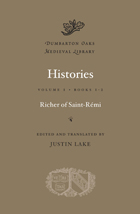
The Historia of Richer of Saint-Rémi (ca. 950–ca. 1000), an invaluable source for understanding tenth-century West Francia (present-day France), provides a rare contemporary account of the waning Carolingian dynasty, accession of Hugh Capet, and failed rebellion of Charles of Lorraine. Beginning in 888, the Historia surveys a tumultuous century in which two competing dynasties struggled for supremacy, while great magnates seized upon the opportunity to carve out their own principalities. Richer’s descriptive talents are on display as he tells of synods and coronations, deception and espionage, battles and sieges, disease and death, and even the difficulties of travel.
The Historia also sheds light on a controversial figure of the Middle Ages, the legendary cleric and scholar Gerbert of Aurillac. Gerbert, the dedicatee of the Historia, rose from humble beginnings to become archbishop of Rheims, archbishop of Ravenna, and eventually pope (as Sylvester II). The Historia contains a fascinating description of his teaching at the cathedral school of Rheims, where his innovations involved instruments such as the monochord, armillary sphere, and abacus.
Translated into English here for the first time, the Historia holds particular attractions for historians and for anyone interested in the cultural and intellectual developments in the Latin West around the year 1000.
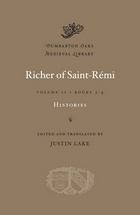
The Historia of Richer of Saint-Rémi (ca. 950–ca. 1000), an invaluable source for understanding tenth-century West Francia (present-day France), provides a rare contemporary account of the waning Carolingian dynasty, accession of Hugh Capet, and failed rebellion of Charles of Lorraine. Beginning in 888, the Historia surveys a tumultuous century in which two competing dynasties struggled for supremacy, while great magnates seized upon the opportunity to carve out their own principalities. Richer’s descriptive talents are on display as he tells of synods and coronations, deception and espionage, battles and sieges, disease and death, and even the difficulties of travel.
The Historia also sheds light on a controversial figure of the Middle Ages, the legendary cleric and scholar Gerbert of Aurillac. Gerbert, the dedicatee of the Historia, rose from humble beginnings to become archbishop of Rheims, archbishop of Ravenna, and eventually pope (as Sylvester II). The Historia contains a fascinating description of his teaching at the cathedral school of Rheims, where his innovations involved instruments such as the monochord, armillary sphere, and abacus.
Translated into English here for the first time, the Historia holds particular attractions for historians and for anyone interested in the cultural and intellectual developments in the Latin West around the year 1000.

The eleven books of poetry by Venantius Fortunatus include well-loved hymns, figure poems, epigrams on miracles, and elegies in the voices of abandoned or exiled women. The sixth-century poet began his career in northern Italy before moving to Gaul, where he wrote for the remainder of his life—praising kings and elites of the Merovingian dynasty and describing the natural scenery and society of his adopted homeland during the transition from late antiquity to the early Middle Ages. In his lively and inventive style, Fortunatus also addressed verses to religious figures such as his patron Gregory of Tours and to holy women such as Radegund, founder of the Convent of the Holy Cross in Poitiers, and Agnes, the convent’s first abbess.
Fortunatus’s imaginative metaphors and wry, self-mocking humor ensure his place in the canon of Christian Latin poets. This volume presents for the first time in English translation all of his poetry, apart from a single long saint’s life in verse.
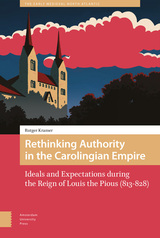
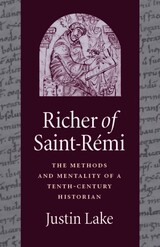
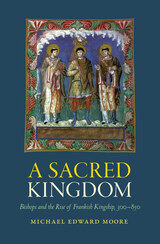
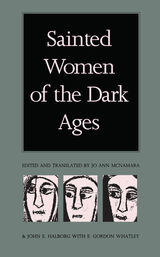
Three of these holy women were queens who turned to religion only after a period of intense worldly activity. Others were members of the Carolingian family, deeply implicated in the political ambitions of their male relatives. Some were partners in the great Irish missions to the pagan countryside and others worked for the physical salvation of the poor. From the peril and suffering of their lives they shaped themselves as paragons of power and achievement. Beloved by their sisters and communities for their spiritual gifts, they ultimately brought forth a new model of sanctity.
These biographies are unusually authentic. At least two were written by women who knew their subjects, while others reflect the direct testimony of sisters within the cloister walls. Each biography is accompanied by an introduction and notes that clarify its historical context. This volume will be an excellent source for students and scholars of women's studies and early medieval social, religious, and political history.
READERS
Browse our collection.
PUBLISHERS
See BiblioVault's publisher services.
STUDENT SERVICES
Files for college accessibility offices.
UChicago Accessibility Resources
home | accessibility | search | about | contact us
BiblioVault ® 2001 - 2024
The University of Chicago Press









